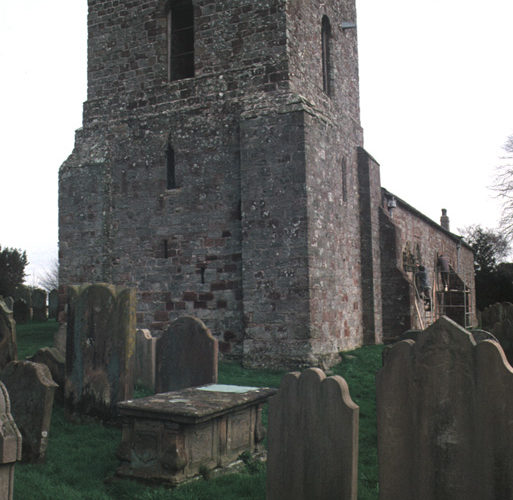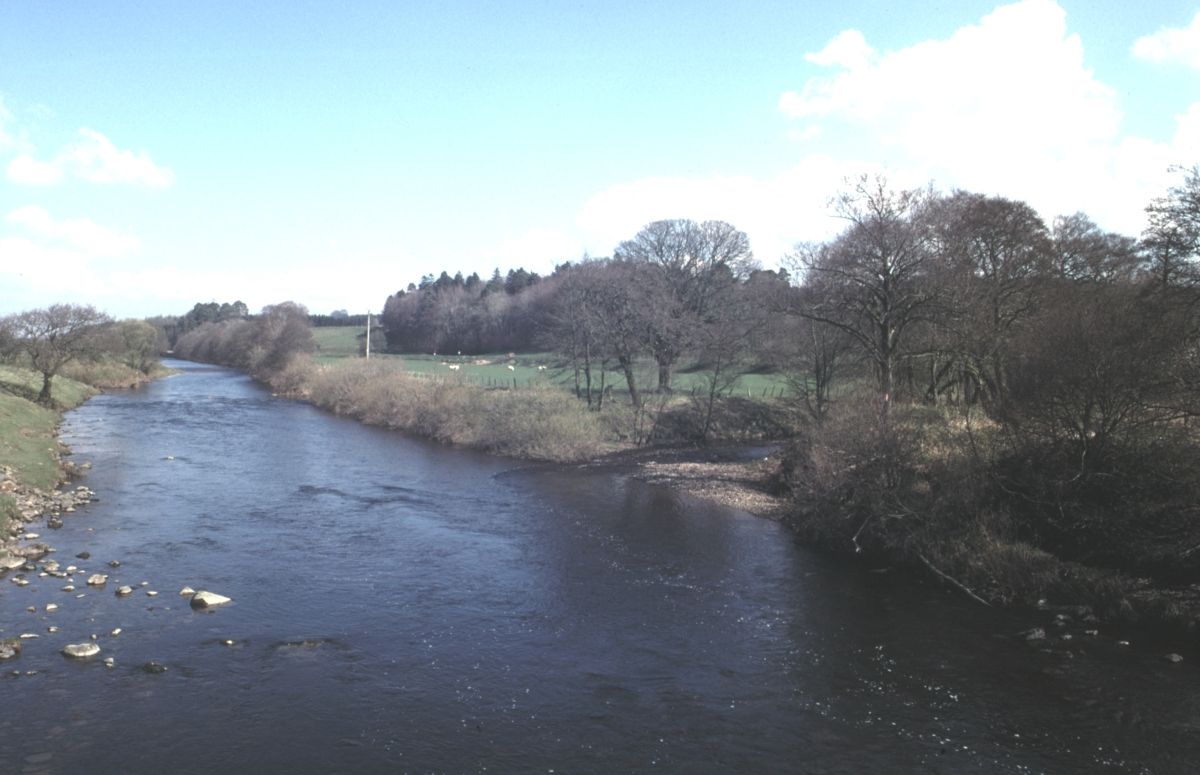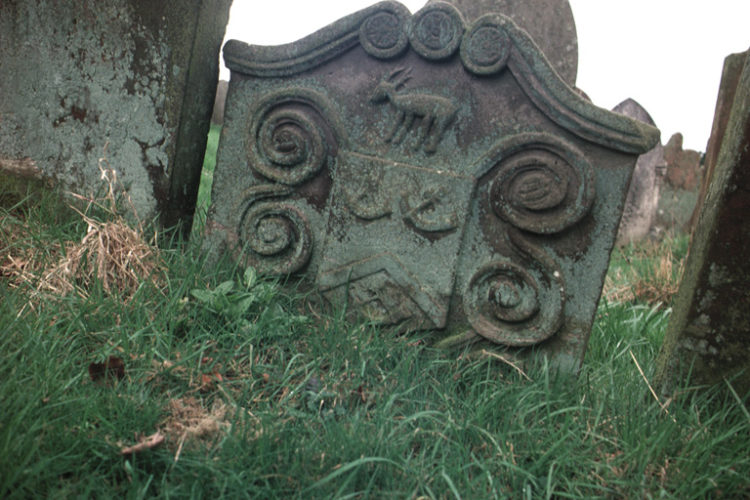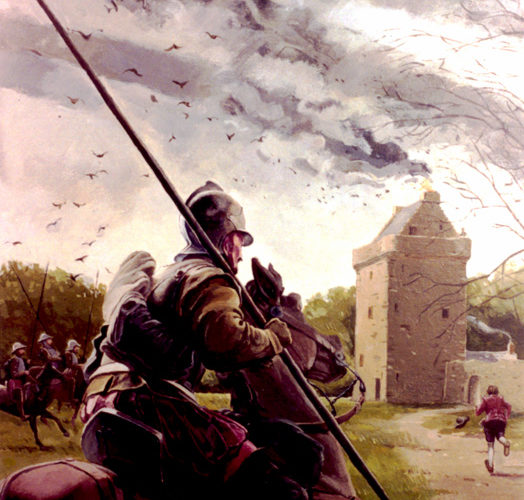The 'Peaceful Persuasion' And Transplanting Of The Marchmen By James VI Scotland & I England/Scotland…

The Church in Cumbria hammered by the Scots
The Church in Cumbria hammered by the Scots!
From the time of the early church to the time of the union between England and Scotland in 1603, there was trouble from Scottish invaders. Until 1157 Scotland laid claim to Cumbria and occupied it on a number of occasions and Cumbria was not even recorded in the Domesday Book of William the Conqueror because it was considered part of Scotland. After 1157 Scots raiders repeatedly advanced through the region looting, pillaging and stealing stock and driving them back over the border. The churches suffered, yet in spite of all, they survived and grew in stature.
A brief summary of Scottish incursions after 1157 are:
| 1173, 1174, 1215 | Raids on and sieges of Carlisle |
| 1216 | Holm Cultram Abbey pillaged |
| 1296 | The earl of Buchan raided Cumberland. Lanercost Priory burnt |
| 1301 | Destruction of a large part of the diocese of Carlisle, monasteries pillaged |
| 1314 | Calder Priory destroyed, incursion up Eden Valley, Brough and Appleby burnt. |
| 1315 | Lord James Douglas besieged Carlisle, went through the plain of Cumberland.
St. Bees Priory destroyed, Egremont attacked, Calder Priory damaged. |
| 1316 | Furness area raided and ravaged. |
| 1318 | Looting and pillaging on border |
| 1322 | Army of Robert Bruce ravaged Allerdale, Copeland and Cumberland generally.
Manor of Rose burnt (now Rose Castle on the Cumbrian reiver trail), Cartmel Priory desolated, Furness Abbey saved by paying a ransom, Holm Cultram Abbey plundered. |
| 1345 | Penrith burnt |
| 1380/90 | Carlisle besieged four times |
| 1402 | Border raids |
| 1430/40 | More border raids |
| 1468 – 70 | More border skirmishing with pillaging |
| 1542 | Destruction in the Solway region; pillaging and ravaging |
Churches in Cumbria.
The Feudal System of Paying the Priest
Under the feudal system, the local priest was entitled to a fixed proportion of the cultivated area of the village, a legacy of the private church of the lord of the manor in pre-Norman days. Usually the priest received a double portion compared with other members of the community. In return he had to provide the male animals to service the herds and flocks. This was the beginning of the parson’s freehold in England.
Wealthy priests
In addition to having twice as much land as the other villagers, tithes were paid to the priest from the parish representing 1/10 of the fruits of the earth. Originally tithes went to the central church organisation, but there was increasing pressure to have it attached to specific churches from whose community it had arrived. If the land was fertile, the church and the rector could become wealthy and thus exchange of churches and of their endowments became common. Today this would be known as property speculation.
While nations fight the Church trades.
The acquisition of productive land by the bishops knew no national boundaries. In 1301 Bishop Holton of Carlisle acquired the rectories of Dalston in Cumbria, Rothbury in Northumberland and Horncastle. Carlisle obtained land revenue from various places in the kingdom. Torpenhow (near Wigton in Cumberland) was granted to Holyrood Abbey in Edinburgh, Lazonby parish (in the Eden Valley south east of Carlisle) gave a pension to the Abbot of Kelso in Scotland while in the reverse direction, Holm Cultram Abbey in Cumberland was endowed from (owned by) Galloway over the border in Scotland. Fountains and Byland Abbeys owned land in Cumberland as did St. Mary’s York in Kendal, Westmorland. So these interchanges show that although the state might define a border, the church had borders of convenience.
Vicar Towers
The vicar could own twice as much land as his flock, and collected the tithe tax. He could become a wealthy member of a community and so was often the target of kidnapping and ransom by reiver raiders. Pele towers offered some protection from abduction and were also known as vicar towers because the vicar so often found protection in them. Pele towers and churches were often sited together and in time some of these pele towers were incorporated into the building of the church and are now seen as the church tower. One good example of this is St Mungo’s Church at Dearham, another is St Bridget’s Church at Brigham in West Cumberland . Another fine example is at Corbridge in Northumberland, (near the Roman Wall) with others at Alnham and Elsdon.
There is a story that one parish had their vicar kidnapped and when the ransom demand was sent, they told the kidnappers that he was so unpopular that they could keep him. Perhaps his sermons were too long!
Scottish Raids reduced the value of land
The constant incursion of the Scottish raiders made life so difficult for the church that in 1301 Bishop Holton of Carlisle wrote
“Some of the religious were scattered as their monasteries were destroyed and several of the churches with their parishes were reduced to ashes in so much that the clergy were unable to live off the fruits of their benefices but were forced to beg alms from place to place”.
The papal taxation system records quite clearly the value of taxes raised in the parishes and we can see that the value of land and property in the diocese of Carlisle dropped from 3,171 pounds, 5 shillings and 7 pence ha’penny in 1292 to 480 pounds, 19 shillings and 0 pence in 1318. The total income of the diocese of Carlisle incumbents fell from 1,616 pounds in 1292 to 1,201 in 1535 as a result of the Scots forays. Bishop Holton was forced to reduce tithes (taxes) and in some cases cancel them altogether. As a result of this, there was a great shortage of clergy and considerable poverty. Even as late as 1536 it was stated that the clergy of Cumberland were probably the most ignorant in England and the people were probably content with them – a not very flattering picture.
Reivers and churchmen
The Lisle family lived south of Alnwick in Northumberland and delighted in harassing the church, especially the canons of Brinkburn Priory. In 1514 they even put the bretheren in the stocks and substituted the Vicar of Felton with their own secular priest. When, a few years later, the Lisles murdered the canon of Brinkburn the Church excommunicated the offenders.
Excommunication and Forgiveness
Excommunication became a regular weapon. The Scots who burned Acomb (near Corbridge by Hadrian’s Wall in Northumberland) suffered excommunication by the Archbishop of York who owned Acomb. The Prince Bishop of Durham excommunicated the raiders of Tynedale and Redesdale in Northumberland.
Forgiveness was available as long as they no longer wore the steel bonnet, their weapon should be less than 20 inches long, owned a horse worth less than 6shillings and eight pence, and abstained from all theft!
Clergy and Concubines
The clergy were not without fault either! Bishop Fox of Durham wrote:
“They keep their concubines; they are irregular, suspended, excommunicated and interdicted clergy, illiterate, so that for ten years they cannot read the words of the mass. Some are not ordained but counterfeits of priests. And they dare to celebrate the Holy Sacrifice in profane and ruined places, with vestments torn, ragged and most filthy… And they administer the sacraments to the thieves without compelling them to restitution…”
Reiving clergy
In some areas, all able bodied men were expected to go on reiving raids and the priest was included! It is recorded that the priest of Bewcastle and his curate were mentioned with the five hundred other men who the Scots complained about in 1552. One cleric from the aptly named village of Morebattle had such a temper that “he invaded the lands of Toft and, armed with a pitchfork, attacked the son of Sir John Ker and George Pott, then upset a cartload of corn in the river”. However the Scottish clerics were no less notorious in their excesses. The Bishop of the Isles attacked estates so regularly that he was “put to the horn” (I leave you to guess what form of death that entailed). The Bishop of Dunkeld boasted that he had never read the Bible!. The Scottish Church in 1455 stated in a chaplain’s appointment that he should “…not pawn the sacred plate … and keep no regular concubine” presumably an occasional lapse was accepted.
By 1542 the behaviour of such priests in Tynedale was so scandalous that Cardinal Wolsey put “that evil country” under interdict ie they were not allowed to perform any ecclesiastical functions or privileges. It was also at this time that the Bishop of Glasgow was moved to deliver his “Bishops Curse” which you can hear in the Tullie House display.
The Reiver’s Baptism
Even baptism had a reiving version where the baby was immersed except for the right hand so the body can do gods work, but the right sword hand can work for the devil.
Book-a-bosom Priests
The area was so dangerous that it became difficult to find resident priests so customs peculiar to the Border and other wild regions emerged. One was the “book-a-bosom” parson who was an itinerant priest with his Book of Mass stowed in his clothing. He would conduct ceremonies to marry, christen and bury as he travelled, though burial required scant ceremony – probably because in such a warlike countryside, they were all too common.
Handfasting and Children
The irregular visits of the priest meant that it was difficult to plan weddings so another custom emerged called “handfasting” where a couple would live together until the book-a-bosom man could bless their union. The arrangement was for a trial period of one year (unless the parson appeared earlier), after which it became permanent. If the couple split up before the wedding then the couple still retained responsibility for the children and they were still regarded as legitimate. Children born out of wedlock were openly figured in men’s wills but when they were not provided for they would have no land and their only source of livelihood was reiving.
Even if children were part of a will, the inheritance system of many families meant that the land was shared equally between the sons so that each generation had a smaller amount of land to scrape a subsistence from. In the sparse winter months, reiving may have been their only way to find food.
Reivers and women
There is little evidence about injury or rape of women. In fact the unwritten Border law held women in particularly high esteem and reivers seemed more intent on a person’s booty than body – perhaps they were in too much of a hurry.
There is a situation that is referred to today in which a family of the Scots raided the homes of the Charltons. In the course of the reive a lady from the Charlton family was killed. This so incensed the Charlton family that they pursued the Scots with unusual vigour. The code of honour amongst thieves had been broken – murder of women was not normally part of a reiving activity. The Charltons pursued the Scots and killed the culprit and stole his sword. That sword is even now held at the head of the clan Charlton and is talked of as the sword that was stolen from the man that murdered the Charlton woman.
When Gilnockie and his followers were executed, one of them was burnt alive instead of being hanged because he was held responsible for the death by fire of women and children. Yet the Warden of the East March of England thought nothing of burning the tower of Catslack in Yarrow with the aged Lady Buccleuch inside, and burning another woman in his assault of Newark Tower. However the English Lieutenant General Earl of Hertford spared neither man, woman nor child when he invaded Scotland. The reivers were, in this respect, less callous, if anything, than their betters.
Please read “The Border Reivers” by Godfrey Watson pps 169-173 for details.
Burials
The reivers had some unusual burial traditions. The Armstrongs buried their dead within their towers, as at Hollows pele tower (see the reiver car trail map). You can see their Dead Stone there. At Bewcastle (north of Carlisle on the car trail map) a visitor asked why the tombstones bore women’s names and so few men’s. “Oh sir” was the reply, “the men are a’ buried at that weary Caerl” (buried at Carlisle after being hung for theft)
Which way should the stairs turn?
When you visit the pele towers and castles in the borders, you will notice that you ascend the spiral stairs in a clockwise direction. However the builders did not have clocks, they were interested in the crisis when the defender is retreating backwards while trying to wield his sword with his right hand. Thus the stairs must spiral in the direction that gives him the most room with his right hand. There is an exception to this rule. The Ker (Kerr) family are predominantly left handed, so their Ferniehirst Castle and other family towers had anti-clockwise stairs. All stairs have “trip-steps” which were an irregular height of step that the resident would be aware of, but the attacker may trip over – every advantage had to seized in the struggle for survival.
Burn your home to save it?!
If a family fled their pele tower they would sometimes stack smouldering peat in the cellar so that the attacker might think twice before bringing gunpowder into the building in case there was a premature explosion which would consume the attacker. However the smoking out technique was popular to drive out the incumbents, and if that did not work other methods of entry included scaling the walls and removing the roof to gain entry.
Reiver buildings
Some pele towers still stand in rugged isolation today; Smailholme tower is a spectacular example of the remote, wild and dangerous existence of the times. You will notice some towers with a building attached and some towers had a double wall called a barnekin attached where the local population could shelter with their animals. Some families built fortified farmhouses called bastels and their style can still be recognised in some of the present rural buildings. The ordinary person would live in small communities called sheilings which are still marked on the Ordnance Survey maps. If you observe the number of settlements marked on the OS map then you begin to form an impression of how busy the area was. In the 16th century it is estimated that there were 120,000 English and 50,000 Scots in 500-600 settlements and villages. Our current bigger population has migrated to the towns, leaving a peaceful wilderness, so use some imagination when travelling along the reiver routes – look out for the ghosts of the reivers.
Glossary
Curate. Clergyman appointed as assistant to an incumbent or as his deputy. There was no protected tenure whereas incumbents could only be removed by being found guilty of serious crimes.
Minister. The word applied to clergy of the Protestant Non-Conformist churches although it might be used by some Anglicans. The role of pastor implied the spiritual nature of the ministry amongst the ministry of all believers accepted by many denominations
Parish. Territorial area spiritually and legally attached to a church and under the care of an incumbent. It was later often distinct from the civil parish.
Parson. The incumbent of a parish although in common parlance it might refer to all clergymen of any denomination.
Perpetual Curate. Incumbent of a parish where the tithes and status have been taken over by person or body though leaving security of tenure. It was a type of living common in Cumbria wherever the dean and chapter of Carlisle of Earl of Lonsdale were the patrons.
Priest. (Post Reformation) Clergy of the Roman Catholic Church and showing that only the ordained could perform important functions. It might occasionally find currency among very high church Anglicans.
Rector. Incumbent of a parish who enjoyed the full value of the tithes.
Registrar. Solicitor or clergyman with legal training who maintained details of legal needs and issues within a diocese although in practise, the assistant registrar did most of the work in Carlisle.
Rural Dean. Clergyman in charge of a rural deanery comprising a number of parishes and responsible for the good order of ecclesiastical matters.
Tithe. One tenth of the value of the income from rural produce payable to the Church of England for its upkeep. It was abolished in 1936 but long before that date, many tithes were in the hands of laymen and corporations who provided to their own use.
Vicar. Customary title for most incumbents of benefices where most of the tithes were in other hands. Vicars were originally parish priests appointed by monasteries to serve their parishes.
Deacons and Elders. Scottish influence in Cumbria led to some non-conformist churches appointing elders where this was more usually applied to Presbyterian senior members. Deacons were the usual Babptist and Congregational equivalent and were separate from the committees of management of either church or circuit which oversaw secular matters.
Dean. Clergyman appointed by the crown to take charge of a cathedral and its affairs.
Archdeacon. A senior clergyman appointed to supervise a particular part of an Anglican diocese by the bishop and given certain rights and duties of visitation of parishes overseeing the church fabric and administration.
Canon. Member of a cathedral chapter. Carlisle’s canons spent 13 weeks each year in a cathedral close and had to read prayers and preach every Sunday.
Author Peter Nicholson. The above article reflects my impressions from reading the following books. Please copy freely but recognise this source. I recommend that you discover more gems of history by reading:
The Border Reivers by Godfrey Watson – Sandhill Press
Steel Bonnets by George MacDonald
The Story of Christianity in Cumbria by Henry L. Widdop
The Lake Counties and Christianity, The Religious History of Cumbria, 1780 – 1920, John Burgess
The Border Laws by W. Nicholson (Bishop Nicholson) Whitehaven Library barely legible.
Lakeland and Border of Long Ago by W. D. MacIntyre.




